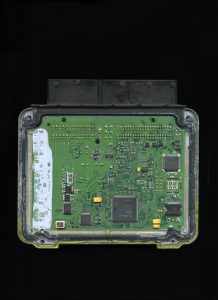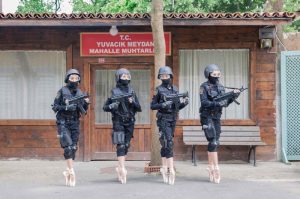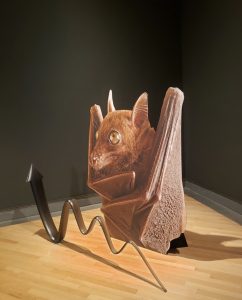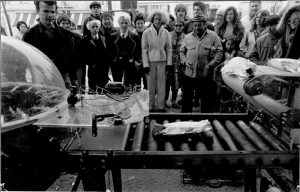Bright: Architectural Illumination and Light Installations, edited by Clare Lowther and Sarah Schultz (amazon UK and USA).
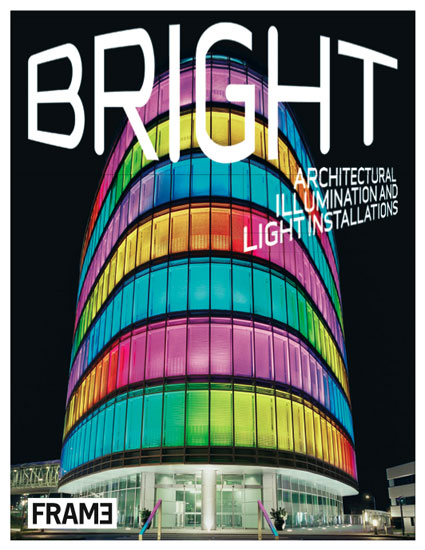
Publisher Gestalten says: Light is a magical medium for creative experimentation that architects and designers are currently using to produce a broad spectrum of exciting work. Bright presents a rich selection of these innovative projects that are setting current trends in the creative use of light. Featuring both stunning photography and detailed text information, the book is not only an up-to-date reference tool for professionals working in the fields of lighting design, architecture and art, but also sheds new light on the future of architecture and design.
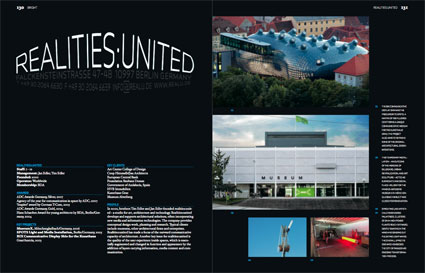 View of the inside of the book (realities:united). Image courtesy Gestalten
View of the inside of the book (realities:united). Image courtesy Gestalten
In his brief introduction text, lighting designer guru Rogier van der Heide from Arup discusses the subtle art of lighting, its ability to balance both task-oriented and experience-oriented strategies, its potential to enhance a brand and the necessity to support its design by a dialog with the client, the environment and concerns about sustainability.
After that it’s an easy cruise, the topic is broken up in 3 sections: static, dynamic and interactive. You navigate from household names to lesser-known design studios. Six to eight pages are dedicated to each studios. The first page lists their contact details, identity, key project and profile. The second one is filled with swanky images of their most spectacular or relevant works. Next, one of their project is selected, illustrated and described in details (how the project started, its objectives, the solutions found to solve the technological challenges, etc.) Easy as pie and compelling. It’s both a book you’ll abandon on your living room table to convince your guests that you have the taste of a trendy and educated man and a volume you’ll actually want to read. I only wish i could have found in the book some information about its editors.
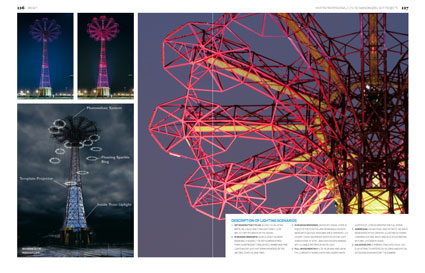 View of the inside of the book (Coney Island Parachute Jump illuminated by by Leni Schwendinger. Image courtesy Gestalten
View of the inside of the book (Coney Island Parachute Jump illuminated by by Leni Schwendinger. Image courtesy Gestalten
Bright catalogs the state of the art of illumination and its use in architecture, and interactive installations. Most of the projects selected are sublime (most of them only, i still haven’t recovered from the sight of the Berliner Dom during Berlin’s Festival of Lights.) Some projects are so astonishing that you forget the building underneath the light show, others act more as subtle enhancement of a building or environment.
A few examples:
Built in the ’30s as part of one of Europe’s largest coal-mining complexes, the Zollverein Kohlenwäsche building’s intended lifespan was of 20 years – the amount of time it was expected to take to exhaust the vein of coal. Instead, after renovation by OMA, and after being granted UNESCO World Heritage protection, the site situated in Essen, Germany, has been opened to the public as an exhibition space. Licht Kunst Licht, in charge of the lighting design, integrated ‘light arteries’ and a group of theatre projectors into the building but its most breathtaking contribution illuminates the main steel gangway that gives access to the Coal Washer.
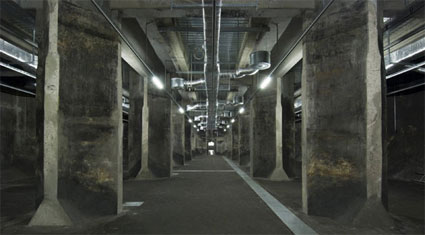 Image via designlines
Image via designlines
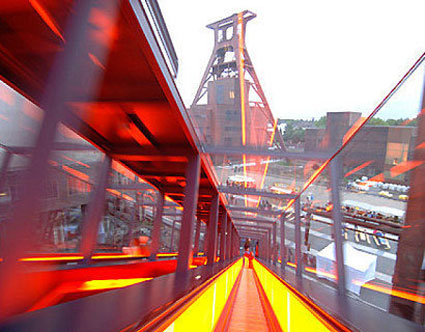 Photo Thomas Mayer, Essen
Photo Thomas Mayer, Essen
Using technology previously employed in Seattle Public Library, the treads and sidepanels were coloured orange. At night, the result evokes a stream of molten steel. The interior staircase is in fact made of unpainted steel; its bright orange colour is an illusion created by the tinted strip lights set into the side-panels.
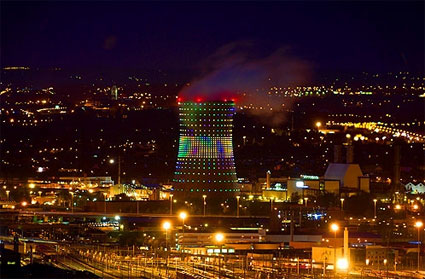
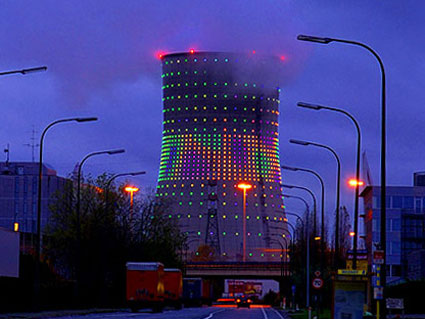 Magic Monkey had professional mountain climbers drill holes into the Electrabel power station in Drogenbos, near Brussels to cover is 18.000 m2 surface with a constellation of thousands of individually controllable LED pixels. Drivers passing by the station can see it from a distance morning and evening.
Magic Monkey had professional mountain climbers drill holes into the Electrabel power station in Drogenbos, near Brussels to cover is 18.000 m2 surface with a constellation of thousands of individually controllable LED pixels. Drivers passing by the station can see it from a distance morning and evening.
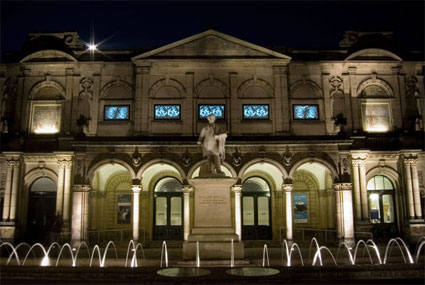
Unlike many of the projects presented in the book, Weather Patterns is a delicate, light installation created to allow the York Art Gallery building to communicate the changing weather cycles surrounding the Gallery in the hours of darkness.
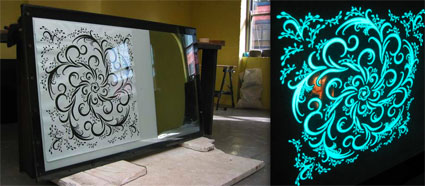 Loop.ph installed five window units which emit light at night and allow sunlight to reflect during daytime. Electroluminescence (EL) panels are sandwiched between toughened glass and a mirror. A computer reads data from a dedicated weather station on site and uses this information to animate the printer EL pattern (movie and animations).
Loop.ph installed five window units which emit light at night and allow sunlight to reflect during daytime. Electroluminescence (EL) panels are sandwiched between toughened glass and a mirror. A computer reads data from a dedicated weather station on site and uses this information to animate the printer EL pattern (movie and animations).
Related stories: Colour by Numbers, Interview of UnitedVisualArtists, Video of Volume, The World’s Largest Timepiece, EnterActive, Light Art from Artificial Light, Tim Edler: Realities United, From Spark to Pixel – Part 1 and Part 2, digital lamp shades.

